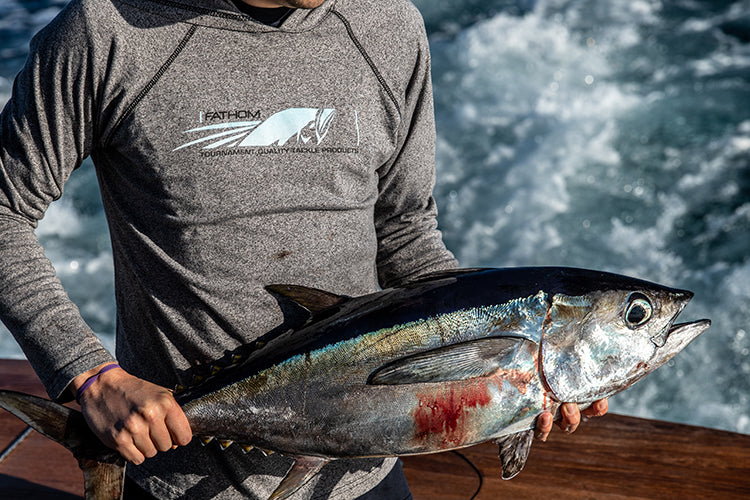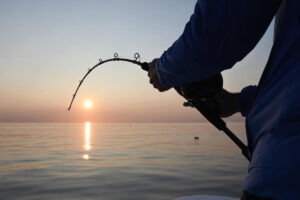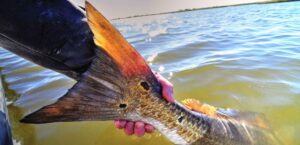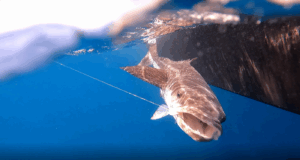Tuna fishing is one of the most exhilarating pursuits in saltwater angling, and trolling is among the most proven methods to hook these fast, powerful predators. Whether you’re targeting yellowfin, bluefin, or albacore, trolling allows you to cover large areas of water and entice tuna with a spread of enticing lures or bait. This guide will break down the fundamentals of trolling for tuna effectively, from gear to technique.
Why Troll for Tuna?
Trolling mimics a small school of baitfish swimming near the surface. Tuna are opportunistic hunters with incredible speed and eyesight, making them highly susceptible to lures or bait pulled at the right speed, depth, and distance. Unlike chunking or casting, trolling keeps you on the move—perfect for locating scattered fish in offshore waters.
Gear Essentials for Tuna Trolling
- Rods and Reels
- Use heavy-duty trolling rods paired with high-capacity conventional reels.
- Reels should have strong drag systems and hold at least 300–500 yards of 50–80 lb monofilament or braid.
- Line and Leaders
- Monofilament offers stretch and shock absorption, while braid allows for more line capacity.
- Use a fluorocarbon leader (80–150 lb) to reduce visibility and resist abrasion.
- Terminal Tackle
- Swivels, snap clips, and crimps should be heavy-duty and rated for big game.
- Consider using wind-on leaders for smoother transitions through guides.
Choosing the Right Lures
Tuna respond to a variety of trolling lures, including:
- Feathers and Jets: Great for high-speed trolling; mimic fleeing baitfish.
- Cedar Plugs: Simple, wooden lures that are surprisingly effective, especially for albacore and yellowfin.
- Soft Plastic Squids: Often rigged in chains or daisy chains to imitate a group of baitfish.
- Diving Plugs: Effective for deeper-feeding tuna.
- Rigged Ballyhoo: A go-to natural bait presentation for serious offshore anglers.
Match lure size and color to local forage—blue/white, pink, and purple are classics. Don’t forget to stagger your spread and mix lure types to find what’s working that day.
Setting Up Your Trolling Spread
A proper trolling spread increases your chances of success:
- Number of Lines: Typically 4–6 lines in a spread.
- Outriggers: Use outriggers to spread lures wider and prevent tangles.
- Flat Lines: Run one or two lures straight off the stern.
- Distance and Depth: Vary lure distances—some close (short rigger), some mid-range (long rigger), and one further back (shotgun). Use diving plugs or planers to reach deeper levels.
Trolling Speed and Techniques
- Speed: 6–8 knots is standard, though feather and jet lures can be trolled at 9–10 knots.
- Zigzag Pattern: Don’t troll in a straight line. Zigzagging mimics the erratic behavior of fleeing prey and exposes your lures to more fish.
- Chumming While Trolling: Throwing chunks overboard can create a scent trail that draws tuna closer to your spread.
Spotting Tuna and Reading the Water
Keep an eye out for:
- Bird Activity: Diving birds often indicate feeding tuna below.
- Bait Balls: Watch for tightly packed schools of baitfish near the surface.
- Jumping Fish or Boils: Obvious signs of tuna feeding frenzies.
- Temperature Breaks: Tuna often patrol the edges of different water temperatures—track these on your fishfinder or chartplotter.
Tips for Success
- Keep Lures Clean: Rinse lures and remove weeds or debris regularly.
- Be Ready: Tuna hit hard and fast. Have your fighting harness ready and someone always near the rod.
- Use Teasers: Adding bird teasers or squid chains can attract attention from a distance.
- Don’t Stop After One Bite: When one rod goes off, keep trolling—tuna often travel in schools, and multiple hookups are common.
Final Thoughts
Trolling for tuna combines the thrill of the hunt with the reward of battling one of the ocean’s strongest gamefish. With the right preparation, spread, and awareness, you can increase your odds of landing that dream tuna. Remember, patience and persistence pay off—especially offshore.
Tight lines and stay sharp on the rod!








